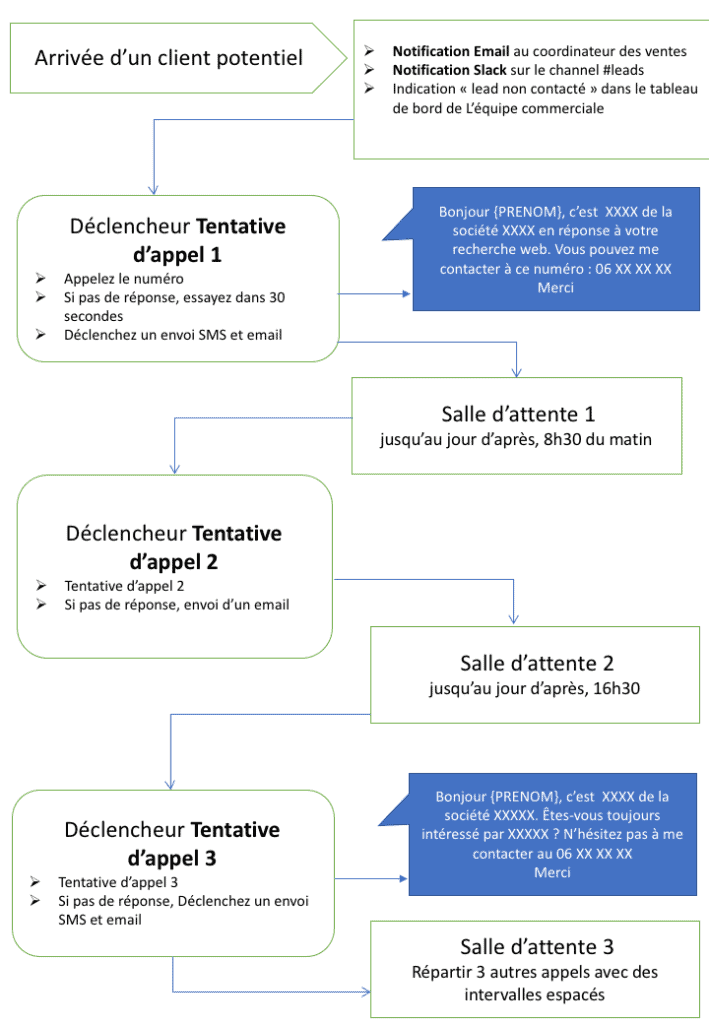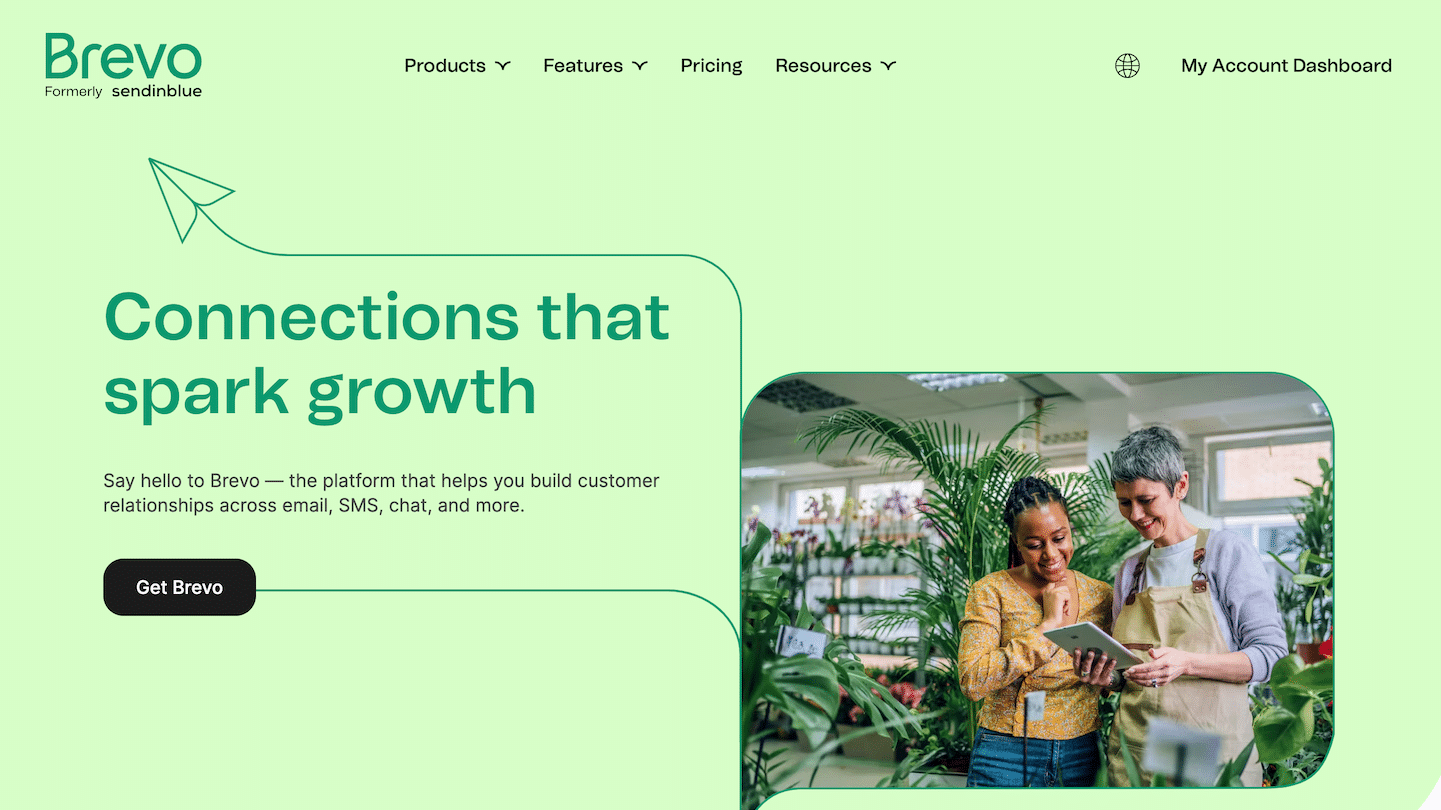You are starting your business! So you need customers and for that you need leads. In the beginning, you do acquisition and take everything. The good leads as well as the not so good ones, the promising ones who are really interested as well as the curious passers-by. Very quickly, you realise that managing all these leads has an increasing cost.
Too many businesses tend to focus on lead generation. However, the influx of all these potential customers quickly increases management costs and conversion costs. The question of customer segmentation, the determination of different paths and the multiplication of contact points quickly arises. Not so simple.
This is where lead management comes in. It will determine how to communicate, to whom, with what message and at what time. It sorts through the flow of leads to direct them to the sales or marketing teams according to their level of interest in your services.

Sommaire
Lead management – Definition
Let’s start by defining the concept:
“Lead Management is the set of procedures/techniques that allow us to capture prospects (or leads), follow their behaviour, qualify them, give them constant attention before passing them on to the sales teams when they are ready to sign.
Often considered as customer acquisition management or contact list management, it is also about incorporating the following procedures:
- Generateleads: Generate consumer interest in a product or service through various marketing levers such as blogs, advertising, white papers and press campaigns.
- Customer research and retention: Marketing targets respond with interest and their data is recorded.
- Qualify and score contacts: Leads are ranked according to their potential to become customers. They are then sent to the sales team. This categorisation and scoring work is crucial to the relevance of lead management.
- Lead nurturing The contact points are then planned to give information that interests the leads on a consistent basis.
The great subtlety of lead management is that once a lead has been taken over by a sales person, there is still a lot to be done.
The complexity varies according to the size of the company, as organising 200 leads is not quite the same as managing 20,000. And when they become customers, the show must go on! You have to continue to nurture the business relationship because follow-up is critical to maintaining a good level of customer satisfaction and keeping sales high.
Good practice in lead management
The databases
To begin with, let us recall the little tricks of good contact point management.
- The validation forms ensure the accuracy of the data, otherwise a simple error in the email address or telephone number makes the lead unreachable.
- Response time to a request: under 5 minutes.
- Communicate with your leads on at least 12 contact points before giving up.
- The best time to contact a potential customer? Within 5 minutes of receiving their email request. Otherwise, your time slots are between 7:30 and 8:30 and between 15:30 and 17:30.
- Know where each lead is in your customer journey using your CRM system to avoid “losing” them along the way.
- Automate as much as possible, whether by email or SMS.
The art of automating lead capture
Marketing automation tools are becoming more and more numerous. They will contribute to the efficiency and consistency of your acquisitions. By automating the capture of users on your website, you can not only obtain important data, but also initiate initial interactions with autoresponders, customer journeys or the provision of white papers.
Automated tools are easier to analyse thanks to reporting and other API keys. Your marketing team can analyse which content attracts the most interest from certain visitor profiles. From there, sales can understand the disincentives and adapt their strategies accordingly. Both teams ensure that no lead receives too much information or worse, not enough.
Clean up your data
The information coming into your CRM comes in through a variety of channels whether it is manual, automated or mass import and with so many sources, duplication is inevitable. Incomplete or erroneous data can also be a real challenge. Therefore, a database cleansing system becomes necessary. The features of certain CRM or Data Management solutions such as Octolis can improve the quality of your data with appropriate processing (checking the validity of emails, de-duplication, etc.).
Prioritise your best leads.
Once the duplicates have been deduplicated and the “invalid” emails put aside, your leads will have very different profiles, more or less close to the typical profile of your customers. In B2B, it is possible to use a scoring method with various variables such as NAF code, type of activity or turnover. Profiles can be grouped together to be dispatched to your salespeople or to your marketing communication according to their maturity in knowing your services. Thanks to this qualification, you automatically direct leads with interesting profiles to the appropriate teams. Validation rules can keep some of your leads in the marketing communication fold if they are not yet mature enough or if they are missing a central piece of information such as telephone or email. This avoids directing leads that are not interested enough to your sales people and wasting their valuable time.
The right distribution of leads between marketing and sales teams
For effective management, sales and marketing teams need to work together. Typically, inbound leads are discovering your services and are moderately interested in the offers you provide. It is up to the marketing team to understand their needs and determine whether or not they are potential customers.
Once the marketing team has directed the lead to the sales team, it is the sales team that will convert the lead. It is crucial to map your sales processes and clearly define when and how leads will be passed on to the sales team. This ensures that no leads are overlooked or abandoned.
How do you go about it?
When you start to develop a distribution tunnel, it is important to remember that your business is unique. Some organisations have few entry points with a very slow sales cycle, while others have multiple touch points and a rapid sales cycle.
Your specifics will define the type of strategy chosen by marketing and sales. But basically, your touch points should look like this:
- Discovery: How the visitor gets to know your company and your services and products.
- Awareness: The mechanisms that turn these visitors into potential customers.
- Entry points: Where the first exchanges between your company and the lead begin.
- Activation strategy: The tools and tactics that help close the sale.
Combine your dashboards and analysis reports
Marketing and sales teams will want to know which channels and promotions are most effective in attracting qualified leads. CRM data can support this analysis by linking marketing activity with your CRM data. You will know which sources generate the most conversions. With this information, you will have a good view on the progress of your sales funnel.
The combination of analysis data, reports and dashboards allows you to get a good overall tracking of your customer journey and to assess its effectiveness. With these tools, your marketing resources will be better used in the future and ROI indices will be used to measure the progress of your operations.
Implementation: Focus on a well-oiled lead processing tunnel
Good practice is all very well but it is sometimes difficult to see how it all fits together.
This is a typical lead management scheme which, although it does not apply to all businesses, is very solid.

We can see here the importance of working well on the entire communication chain, starting with the qualification of leads so as not to waste time with unsolicited calls and your time with a pitch to a client who is not interested. Scoring is a good way of qualifying leads that you can use by group. For example, group A for leads who are asking for basic information, group B for leads who are asking for clarification and group C for leads who are willing to receive a prospecting call.
Of course, we want our leads to progress through a Lead > Marketing > Sales processing tunnel but we also want to have the ability to move them back if their engagement level drops. This is more common than it sounds.
After all these best practices, a vision starts to emerge for the implementation of lead management. Build the parameters of your customers’ life cycle and do not hesitate to personalise them, because from the first subscription stage to the regular customer status, you must add your own stages in the communication scenarios. This will serve as a basis for creating a smart list combining the information of the potential customer but also his positioning in your life cycle.
Each communication, whether marketing or sales, will refer to this Smart List to create a more personalised message based on the information you have about your lead and their maturity in discovering your services and products.






